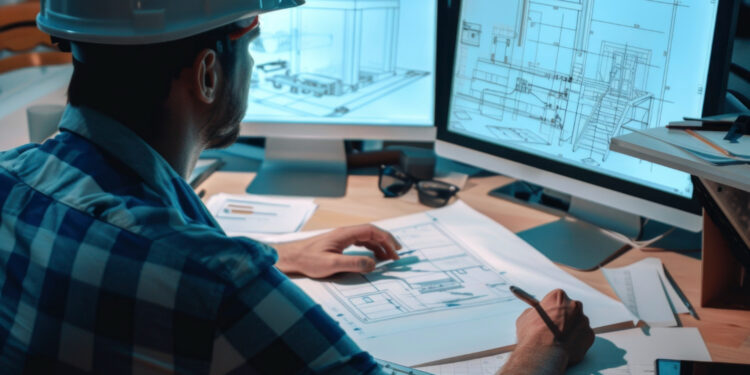Key Tips for Manufacturers When Starting a New Infrastructure Project: A Comprehensive Guide


Launching a new infrastructure project is a significant undertaking for manufacturers. The process involves careful planning, resource management, and a clear understanding of potential challenges. Whether the project involves expanding facilities, upgrading equipment, or introducing new technology, manufacturers must navigate complex considerations to ensure success. In this guide, we will outline key tips for manufacturers to keep in mind when launching an infrastructure project.
Table of Contents
- 1 1. Define Clear Objectives and Scope
- 2 2. Budget Wisely and Plan for Contingencies
- 3 3. Assemble the Right Team
- 4 4. Conduct a Thorough Site Assessment
- 5 5. Prioritize Sustainability and Environmental Impact
- 6 6. Stay Updated on Regulatory Requirements
- 7 7. Leverage Technology for Efficiency
- 8 8. Communicate Effectively Throughout the Project
- 9 9. Monitor Progress and Adapt as Necessary
- 10 Conclusion
1. Define Clear Objectives and Scope
Before starting any infrastructure project, it’s critical to clearly define your objectives. What exactly are you trying to achieve with this new infrastructure? Are you looking to increase production capacity, improve efficiency, or enhance safety measures? Once you have a clear understanding of the goals, define the scope of the project. The scope will outline the resources, timeline, and deliverables required for success.
It’s important to ensure that all stakeholders—managers, engineers, and external partners—are aligned on these objectives from the start. Misaligned expectations can lead to delays, increased costs, and wasted efforts. Document your objectives and scope thoroughly and revisit them regularly to ensure they remain on track.
2. Budget Wisely and Plan for Contingencies
A well-structured budget is the foundation of any successful infrastructure project. It’s essential to break down costs in detail, considering all possible expenses. This includes construction costs, equipment purchases, labor, and unforeseen expenses like changes in regulations or material shortages.
Beyond a basic budget, it’s wise to allocate funds for contingencies. Unexpected issues often arise in large-scale infrastructure projects, so setting aside additional funds will help manage risks. Manufacturers should work closely with financial planners and project managers to ensure that the project remains within budget.
For larger projects, consider consulting with financial experts who can provide insight into cost-saving measures and help you assess potential financial risks. Failing to plan for contingencies can result in costly delays that could derail the entire project.
3. Assemble the Right Team
An infrastructure project requires a team of skilled professionals with expertise in various areas. The right team members will provide technical knowledge, project management skills, and insight into the operational needs of the business. Consider recruiting specialists in construction, engineering, safety, and operations. For certain tasks, you might also need to look into engineering staffing solutions to ensure you have the right talent in place.
Experienced professionals who are familiar with the specific challenges of infrastructure projects will be invaluable in ensuring the project runs smoothly. If you do not have in-house resources, partnering with contractors or staffing agencies can help you bring in the necessary expertise. Make sure to vet all team members thoroughly and check their experience with similar projects.
4. Conduct a Thorough Site Assessment
Conducting a site assessment is a critical step that should not be overlooked. Whether you’re upgrading existing infrastructure or building from the ground up, understanding the site’s physical conditions is essential. Consider the geographical location, climate, and environmental factors that could affect the construction process.
For example, if you’re in an area prone to natural disasters, you will need to ensure that your infrastructure meets safety and resilience standards. Additionally, take into account local zoning laws and building codes, as these will directly impact the design and implementation of the project. A thorough site assessment will help identify potential challenges early on and allow you to make adjustments before construction begins.
5. Prioritize Sustainability and Environmental Impact
Sustainability has become an essential consideration for modern infrastructure projects. Manufacturers are increasingly aware of the environmental impact of their operations and are prioritizing green practices to reduce their carbon footprint and improve energy efficiency.
When planning a new infrastructure project, consider how you can incorporate sustainable practices. This might involve using energy-efficient materials, adopting renewable energy sources, or designing buildings with natural light to reduce energy consumption. Many governments offer incentives for sustainable construction practices, so it’s worth investigating available grants or tax breaks.
Additionally, manufacturers must ensure that the construction process adheres to environmental regulations. This includes managing waste, controlling emissions, and protecting local wildlife. Taking the time to consider these aspects can improve both the project’s long-term sustainability and your company’s reputation.
6. Stay Updated on Regulatory Requirements
Regulatory requirements can significantly impact the scope and timeline of infrastructure projects. Depending on the location and nature of the project, manufacturers may need to comply with a variety of local, state, and federal regulations. These might involve zoning laws, environmental standards, and safety codes.
For example, the Occupational Safety and Health Administration (OSHA) provides guidelines on safety measures that must be followed during construction to prevent accidents. Manufacturers should be familiar with these regulations and work closely with legal experts and regulatory bodies to ensure compliance throughout the project.
Changes in regulations can also occur during the course of a project, so it’s crucial to stay informed and adapt as necessary. By anticipating regulatory challenges early on, manufacturers can avoid costly delays or fines.
7. Leverage Technology for Efficiency
Technology plays an increasingly important role in infrastructure projects. From advanced construction techniques to software that helps manage timelines and resources, leveraging technology can streamline the entire process.
Project management software is one of the most beneficial tools for overseeing an infrastructure project. This software helps coordinate tasks, track budgets, and monitor progress in real time. It also provides a platform for communication between team members, which is crucial for keeping the project on schedule.
In addition to project management software, consider adopting new construction technologies that can improve efficiency. This might include Building Information Modeling (BIM) for better design and visualization or drones for site surveying and inspection. Utilizing these tools can help reduce errors, minimize delays, and optimize the entire project lifecycle.
8. Communicate Effectively Throughout the Project
Effective communication is one of the most critical factors for a successful infrastructure project. All team members, from engineers to contractors, need to stay in the loop about progress, challenges, and any changes to the project’s scope.
Frequent updates and clear communication can help mitigate misunderstandings and ensure that everyone is aligned on expectations. Establishing regular check-ins and project meetings will allow you to address issues as they arise, minimizing the risk of delays.
In addition to internal communication, manufacturers should maintain open lines of communication with external stakeholders, including local government officials, community members, and suppliers. Transparency with the broader community can help build trust and avoid potential conflicts during construction.
9. Monitor Progress and Adapt as Necessary
Even with a clear plan and the right team in place, unexpected issues can arise during an infrastructure project. It’s essential to monitor the project’s progress continuously to identify any roadblocks or delays early on.
This requires staying on top of the project schedule and budget, regularly assessing progress, and making adjustments as necessary. If certain tasks are falling behind, you may need to allocate additional resources or extend the timeline to ensure the project remains on track.
Being flexible and adaptable is key to overcoming challenges and ensuring the project’s success.
Conclusion
Launching a new infrastructure project can be a complex and challenging process, but with careful planning and the right approach, manufacturers can achieve their goals efficiently and effectively. By defining clear objectives, assembling the right team, conducting thorough assessments, and staying informed about regulations and sustainability practices, you can navigate the complexities of infrastructure projects with confidence.






